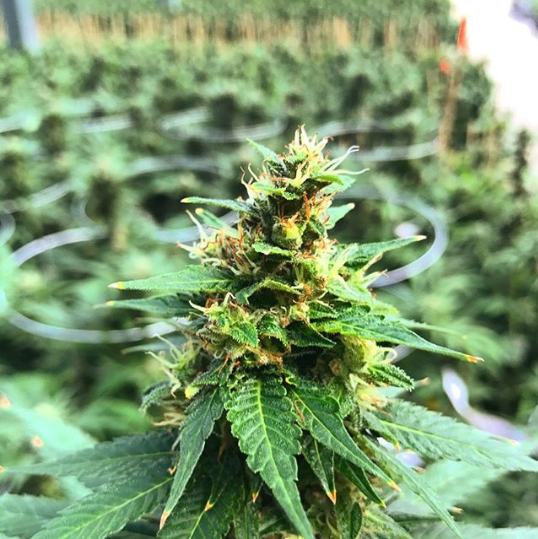
Terpenes and cannabinoids are active chemical compounds in the cannabis plant, and both perform important functions. Cannabinoids like CBD and THC are largely responsible for the psychoactive, therapeutic, and medicinal benefits of cannabis. Terpenes are lesser-known compounds found in cannabis and are responsible for flavor and smell.
What do cannabinoids do?
The majority of the 100+ known cannabinoids do not produce the intoxicating effects of THC, but they do regulate how your cells communicate within the endocannabinoid system. This is important because the endocannabinoid system regulates a number of processes and bodily functions, including mood, appetite, sleep patterns, reproduction, memory, and pain sensation.
When you introduce cannabinoids into the body, they can have different pharmacological effects depending on their interaction with receptors. Research – along with copious anecdotal evidence – suggests that cannabinoids can:
- Relieve pain
- Reduce inflammation
- Soothe anxiety
- Stimulate appetite
- Ameliorate nausea
- Diminish muscle seizures
- Slow tumor growth
- Alleviate insomnia
The function of terpenes
Many casual connoisseurs are not as familiar with terpenes, which give cannabis its unique aroma and flavor. Terpenes are very similar to cannabinoids in their chemical structure, and at least 200 of these compounds have been identified in cannabis plants, though these aromatic molecules can be found elsewhere in the natural world of flora.
Cannabis terpenes are secreted from the plant’s resin glands and emit the distinctive aromas like mint, pine, coffee, berry, and citrus that we’ve come to associate with different strains. The original purpose of terpenes has to do with adaptability. Terpenes are secreted by plants to help lure potential pollinators and deter predators and other environmental hazards.
These volatile compounds also play a role in the plant’s oxygenation and ability to regenerate. While hundreds of cannabis terpenes exist, only a dozen are sufficiently present to have noted effects. Some of the most studied terpenes include caryophyllene, myrcene, limonene, and pinene.
The synergy between terpenes and cannabinoids
When terpenes and cannabinoids interact in the human body, they produce a synergistic effect, more commonly known as the ‘entourage effect’. In other words, these two compounds work hand-in-hand within the endocannabinoid system to temper or enhance the other’s therapeutic properties and side effects.
A 2011 report on phytocannabinoid-terpenoid entourage effects looked into the synergy in regards to treating addiction, anxiety, depression, epilepsy, fungal infections, cancer, and other ailments. Researchers concluded that terpenes and cannabinoids may be complementary, with the upshot being a broadened and more promising scope of clinical applications for cannabis extracts.
Terpene composition shows great variations across different strains of cannabis. To identify a precise terpene profile, you’ll want to work with an ISO 17025 accredited cannabis testing lab like Modern Canna.
Get the right product for your needs with Modern Canna
Research continues on the interplay between terpenes and cannabinoids, and how their synergy impacts the psychoactive and medicinal effects of cannabis.
To learn more about our full range of cannabis testing and analytics, contact Modern Canna. Reach out to our Lakeland, FL office with any inquiries.



 Modern Canna
Modern Canna